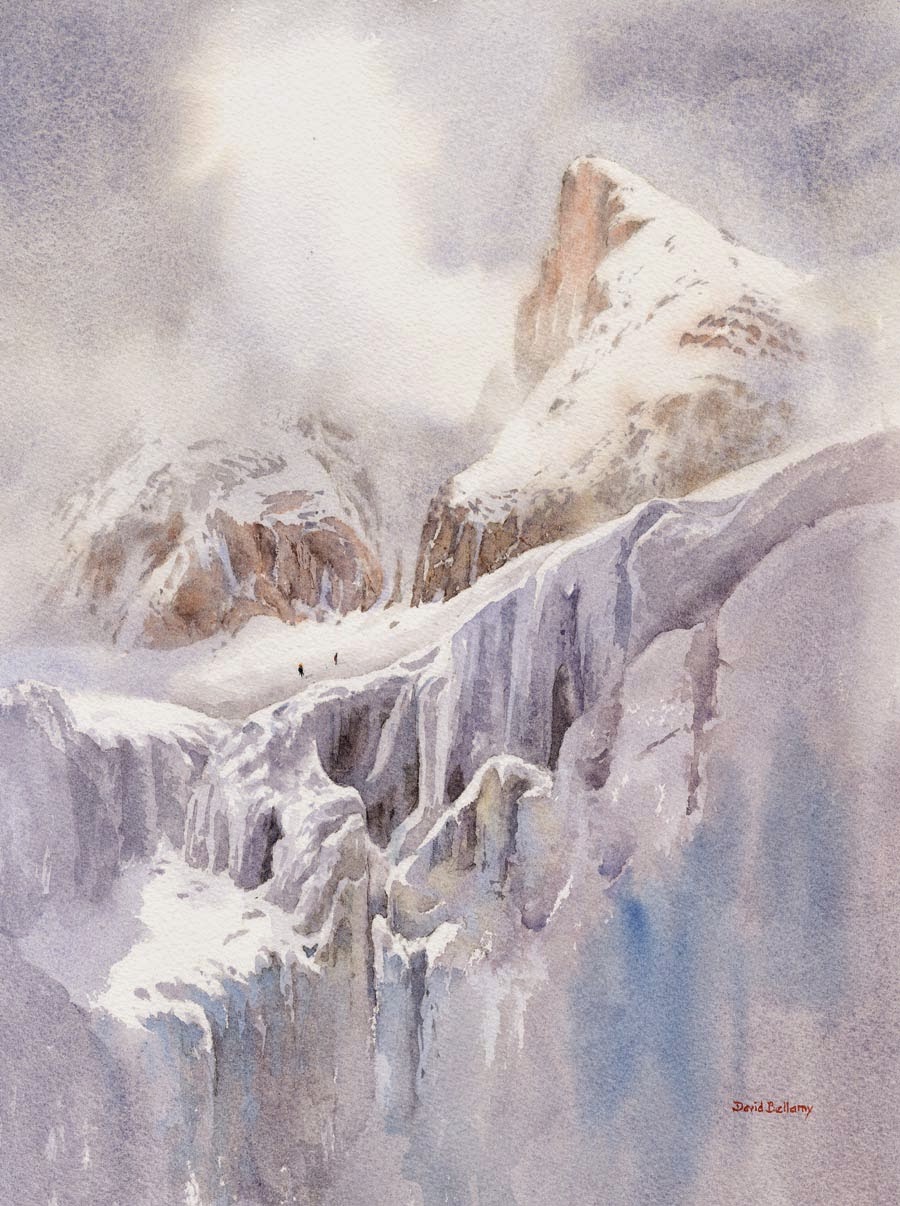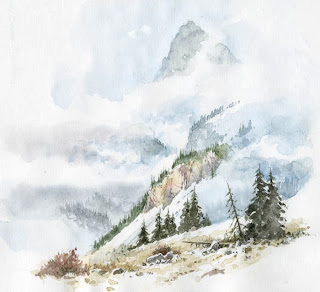Mountains are often best painted when you can’t really see them – that is, you can’t see very much of them as they are mostly hidden in cloud. This lends an air of mystery, and you wonder what else is hidden within that mass of clouds. That is most definitely the case with this watercolour of a string of common eider flying up Kongsfjorden in Spitzbergen, with the backdrop of Alpine-style peaks partly hidden behind streams of cloud. Even if you can see everything clearly it often pays to lose some part of the mountain in cloud, shadow or a squall.
This is one of ten paintings I have in the exhibition at Patchings Art Centre in Nottinghamshire, from Saturday 27th August to Sunday 2nd October. The exhibition features artists from the Search Press art books stable, and will include demonstrations by most of the artists. I shall be doing a demonstration on Saturday 24th September, which will be online. It is always a great pleasure to work with Patchings with their unfailing high standards, efficiency and generosity.
It’s been a busy summer, with a holiday in Pembrokeshire in July with the family, including the grand-daughters who kept us so busy. It was great to be with them, though lion-taming is much easier. After that I was badly in need of a holiday, so then spent some time in Snowdonia. There I found it far too hot to climb high mountains – jumping into rivers was a far more sensible idea, and I took things at a slower pace than usual. This actually helped the standard of my sketches and I was pleasantly surprised at the results.
By the way, if you want to make a splash see the October issue of Leisure Painter magazine for my feature on creating surf splashing over rocks.





